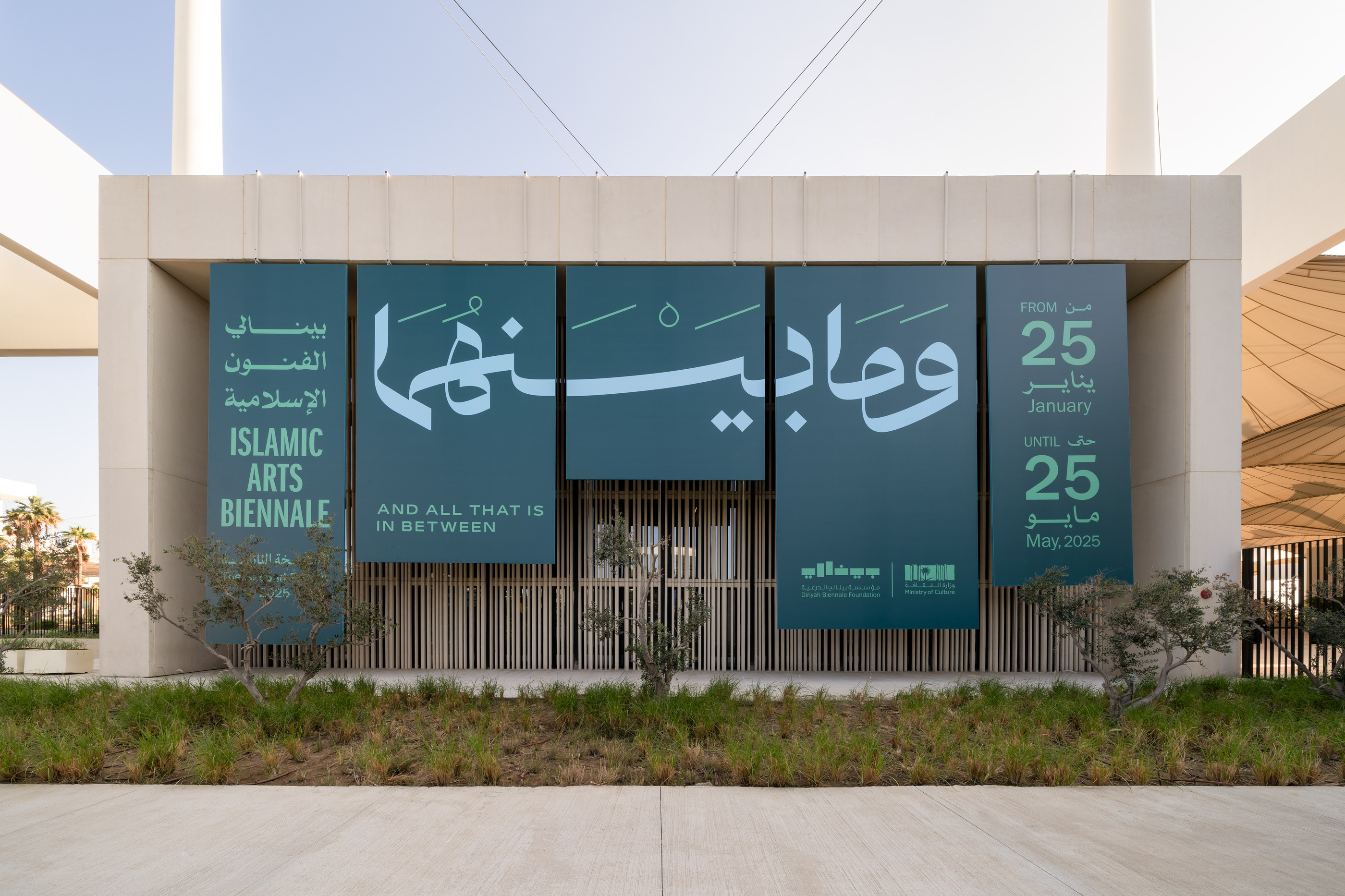The second edition of the Islamic Arts Biennale has opened in Jeddah, offering a sweeping exploration of how faith is experienced, expressed, and celebrated through feeling, thinking, and making. Titled And All That Is In Between, the Biennale brings together more than 500 historical artifacts and contemporary artworks from around the world, spread across five exhibition halls and expansive outdoor areas at the Western Hajj Terminal of King Abdulaziz International Airport.
Organised by the Diriyah Biennale Foundation and open until 25 May 2025, this year’s Biennale has grown in scale and ambition. More than 30 artists and 30 international institutions from across 20 countries are participating, including renowned cultural bodies such as the Musée du Louvre, the Victoria and Albert Museum, and the Museum of Islamic Art in Doha. The exhibition features 29 new commissions, several of which are in dialogue with objects from Islamic history.
At its heart, the Biennale seeks to connect the sacred with the contemporary. The title is drawn from a recurring Quranic verse: “And God created the Heavens and the Earth and all that is in between,” inviting reflection on the expanse of creation and the human attempt to understand the divine.
A Platform for Global Dialogue
Curated by an international team led by Julian Raby, Amin Jaffer, Abdul Rahman Azzam, and Saudi artist Muhannad Shono, the Biennale positions itself as a central platform for the study and presentation of Islamic arts. The event’s location—Jeddah’s Western Hajj Terminal—adds a layer of meaning, recalling the emotional weight of millions of pilgrimages that pass through it annually.
Saudi Arabia’s historical custodianship of Makkah and Madinah is also foregrounded, with rare artifacts on display from both cities. Among them is the first-ever public presentation of the full Kiswah—the black-and-gold cloth that covers the Kaaba in Makkah—outside its usual location. The version on display was used in the previous Hajj season.
Seven Sections, One Journey
The exhibition is divided into seven thematic zones that blend historical and contemporary works. AlBidayah (“The Beginning”) introduces viewers to sacred objects from the holy cities, while AlMadar (“The Orbit”) explores the role of scientific and mathematical inquiry in Islamic history, juxtaposing navigational tools with modern art installations.
AlMuqtani (“Homage”) honours the contributions of private collectors to the preservation of Islamic heritage. Meanwhile, the open-air section AlMidhallah (“The Canopy”) showcases 20 site-specific installations, many inspired by Islamic garden design and current social and environmental issues.
Two permanent pavilions—AlMukarramah and AlMunawwarah—pay tribute to Makkah and Madinah respectively, using early photography, rare textiles, and immersive design to present their spiritual and cultural legacies.
The AlMusalla Prize, launched by the Diriyah Biennale Foundation, is also on display this year. The winning design, by EAST Architecture Studio with artist Rayyane Tabet and engineers AKT II, consists of a loom-like structure made from local date palm waste, offering a reimagined space of prayer and reflection.
Public Programming and Education
Alongside the exhibition, the Biennale hosts a wide range of public programs intended to foster learning and engagement. Weekly events include Culinary Thursdays, Sketching Saturdays, Cinema Nights, and tours for children. A new symposium, Turuq: The Many Ways of Food, will explore the culinary heritage of the Arab world.
Sotheby’s has also launched a new educational series titled The World of Islamic Art, running from 6 April to 15 May. Featuring talks by specialists from institutions such as the Guggenheim, Victoria and Albert Museum, and Turquoise Mountain, the series aims to make Islamic art more accessible to broad audiences. Guided tours of the Biennale will follow each session.
A Growing Cultural Role
The Diriyah Biennale Foundation, chaired by Prince Badr bin Abdullah bin Farhan Al Saud, sees the Biennale as part of a broader effort to expand cultural engagement within Saudi Arabia. The first edition attracted more than 600,000 visitors, and the second aims to reach even more with its expanded scope and global partnerships.
With artists and institutions from Saudi Arabia, the wider Gulf, and across Asia, Africa, Europe, and the Americas, And All That Is In Between not only celebrates Islamic art but also positions Jeddah—and Saudi Arabia more broadly—as a hub for international cultural dialogue.








Comments (0)